Symbols from ancient Greece are being granted new life in the hands of talented artists who, through their elaborate jewelry, are reviving thousand-year-old Greek designs on an international stage.
Deeply influenced by the history and the myths of times long past, these designers draw on ancient Greek shapes and designs, plucked from paintings, pottery motifs, sculptures, engraved stones, architectural elements and reliefs.
Necklaces and pendants inspired by the Mycenaean civilization, earrings influenced by elaborate Minoan styles, and brooches reminiscent of jewelry unearthed in excavations in Crete, ancient Corinth and Pylos all take form in their workshops. From there, these items travel to customers around the world. Even marble, an unconventional material for jewelry, has been transformed into an ambassador of design within and beyond Greece’s borders.
During a period of instability, these artists are honoring their roots and drawing on elements from those ancient periods of their country which so enthrall the world. Using this valuable heritage to their advantage, they have set about rejuvenating the image of their country through artistic excellence.
“Using their valuable heritage to their advantage, these designers have set about rejuvenating the image of their country through artistic excellence.”
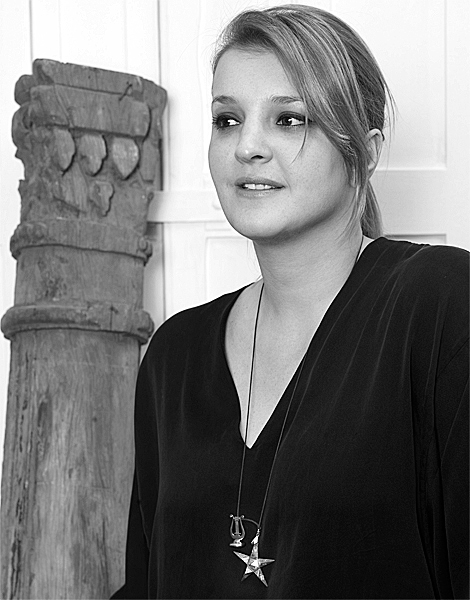
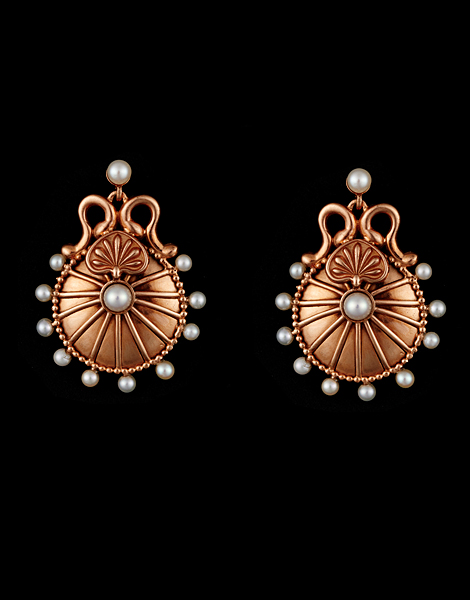
THE GREEK CHIC PIONEER
SOPHIA KOKOSALAKI
The prime representative of “Greek Chic” and the person who brought ancient style back onto the world fashion map, Sophia Kokosalaki has secured her own place in the field of design. British Vogue celebrates her unparalleled draping, while the French edition considers her the worthy successor of two important French designers, Madame Grès and Madeleine Vionnet, (whose fashion house asked her to be Creative Director in 2006-07).
“It’s not the first nor the last time that people are impressed with our heritage,” the Greek designer says from her London studio. “French women, the Americans and lately Chinese women – who lead the luxury market internationally – have been won over by ancient style.”
The artist behind Bjork’s striking dress at the Athens 2004 opening ceremony, Kokosalaki explains her early approach. “I avoided easy clichés, I tried to experiment and this helped my development.” She recently launched her first collection of jewelry (inspired by Greek mythology) that will soon be sold in Greece. “I found another way to narrate ancient Greek myths that both inspire and excite me, but with a modern approach. My jewelry is made exclusively in Athens by experienced craftsmen and I am delighted that I have another reason to travel my country. Greece and, in particular, Crete – where I come from – are my legacy. I hope that my creations manage to capture all the emotions that I feel every time I come face to face with ancient artifacts.”
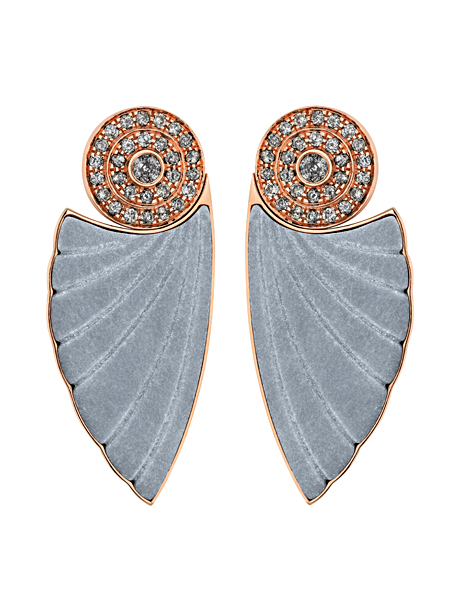

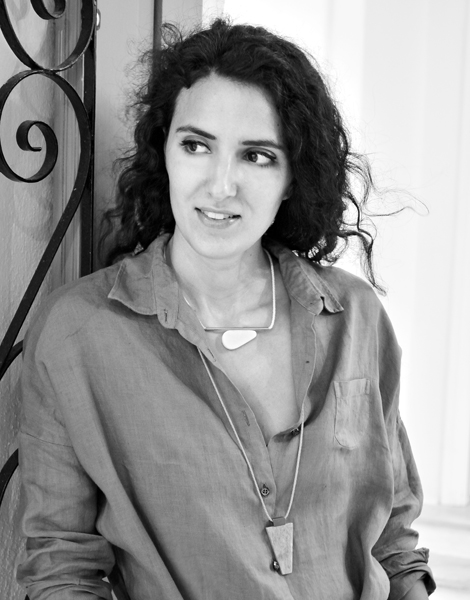
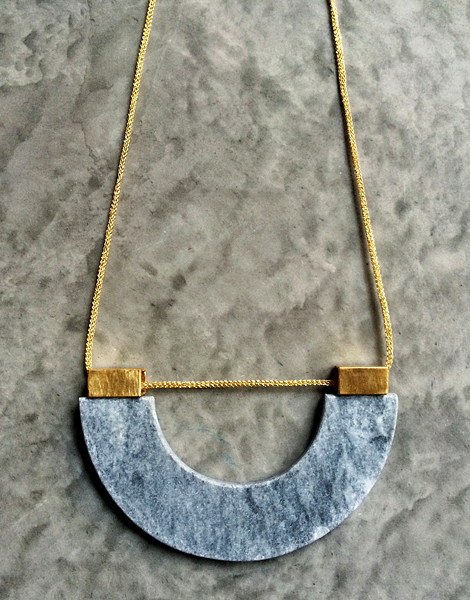
RENDERED IN STONE
IOANNA SOUFLIAS & XENIA NEFELLY VLACHOU
Marble took a starring role in the life of Ionanna Souflias and Xenia Nefelly Vlachou, two young designers who managed to tame this material into beautiful sculpted pieces of jewelry. “Its unexpected presence as a piece of the jewelry was a challenge, and also a link to my Greek heritage,” Ioanna Souflias explains. She presented her first “marble collection” three years ago as part of her graduation from London’s famous design school Central Saint Martins.
A graduate of the Athens Law School, Ioanna succumbed to the lure of artistic creation and made her commercial debut in 2015 with the collection “Symbiosis”, combining Thassos marble with gold. She was recently chosen to participate alongside other colleagues in the exhibition titled “Vanity, Jewel Stories from the Cyclades,” which is currently on show at the Archaeological Museum of Mykonos.
“My goal with this series is to use a timeless material to reinforce the Greek element in my craft,” says 33-year-old Xenia Nefelly Vlachou, creator of the “Marmarometry” jewelry series. Vlachou uses this work to support the return of the Parthenon sculptures. “For me, fashion can serve other purposes, in addition to appearance and style.”
Despite the limitations inherent in working with this unconventional material, Vlachou managed to create jewelry which can be found in museum shops across Greece. The ancient theater of Epidaurus, the vaulted tombs of Mycenae and ancient statues are converted into striking necklaces. “The new generation of designers is turning its back on foreign elements; the current crisis may have helped in this. Our generation is better traveled, and we found that ancient Greece influenced the world. How can we ignore that?”
“’Our generation is better traveled, and we found that ancient Greece influenced the world. How can we ignore that?’”

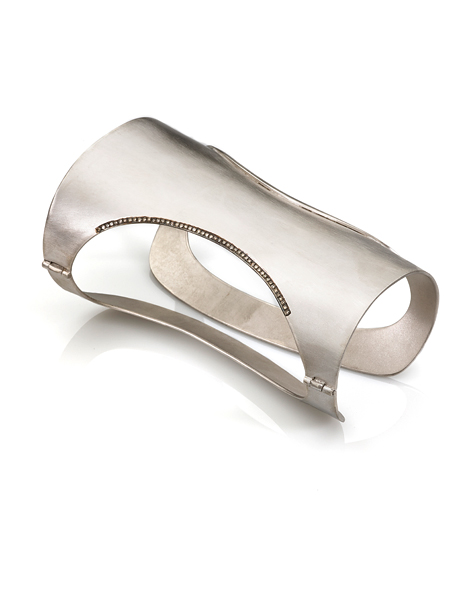
FROM THE EARTH TO THE WORKSHOP
POLINA SAPOUNA ELLIS
From the age of 11, Sapouna Ellis was lucky enough to find herself at the center of important archaeological excavations. The niece of the famous archaeological team of Yiannis Sakellaraki and Efi Sapouna, young Polina was quickly entranced by their contact with the earth and the treasures their digs revealed to her. The summers of her adolescence were spent at various excavation sites in Crete, including Arhanes, Zomynthos and the Ideon Cave. This exposure helped determine the educational route she took, which eventually included studying archaeology.
In 2010, after dabbling with painting, her artistic side found expression through jewelry. “I combined my experiences. The minimalism of excavation – earth, clay and metals – directed me to modern design,” Sapouna Ellis explains. The chariot from the Acropolis Museum and the strict lines of Mycenaean art inspire the collections “Tethrippon”, “Dorian” and “Mycenaean”. “We are currently witnessing a spate of ancient design,” she says. “This is due to the crisis. The Greeks were cut off from their past, but now they have returned to their roots. I am sure that eventually Greece will emerge from this maelstrom even stronger.”
“The summers of her adolescence were spent at various excavation sites in Crete, including Arhanes, Zomynthos and the Ideon Cave. ”
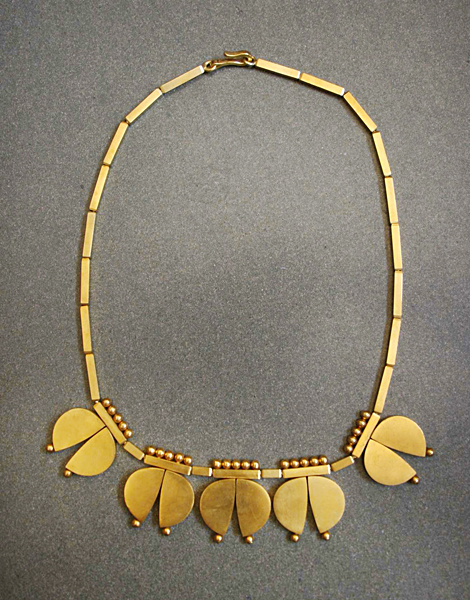
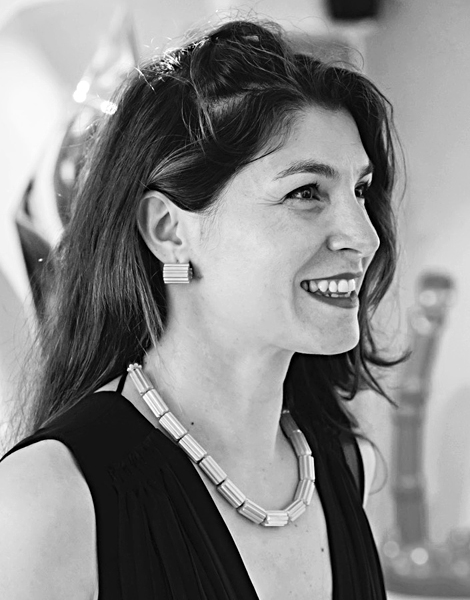
FIT FOR HELEN OF TROY
EVA PAPADOPOULOU
The portrait of Sophia Schliemann with the famous “diadem of Helen” from the excavation of Troy was the inspiration for Eva’s entrance into the field of jewelry. “When I saw these priceless treasures, I felt the need to create jewelry that could have been worn by Olympias, Hecuba, Ariadne, Persephone …”
The young Paris-based designer manufactures her pieces in Greece. “The cost is higher, but I insist,” she says. Raised in an artistic environment, her contact with sculpture greatly influenced her own sense of esthetics. “Jewelry is about shapes. I never design just on paper; instead, a sample is made out of cardboard so that it’s three dimensional.” Her new collection, still in development, is called “Wisdom – Fertility – Immortality” and is inspired by the figure of the serpent. The Scarf of Inos, which saves Odysseus from the sea, will also inspire a new project, a series of silk scarves, which has already secured collaboration with the leading brand Ancient Greek Sandals. “I think that those of us who descended from this blessed land, those with the blood of such ancestors flowing in our veins always look to the wisdom of Greek heritage to help us find our way when we’re lost.”
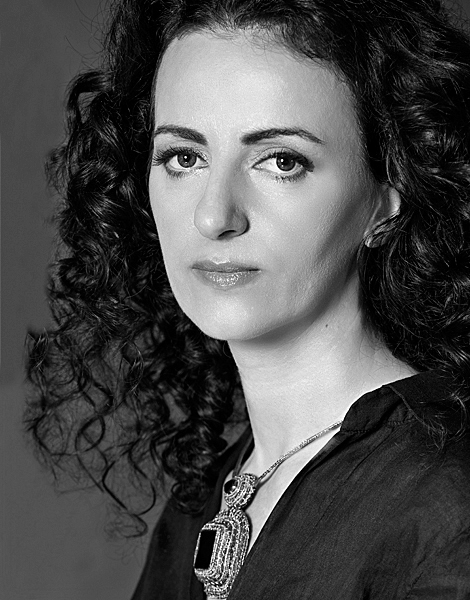
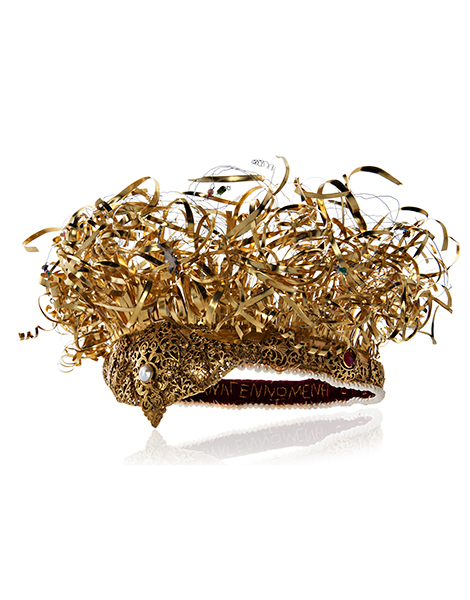
DRAWING STRENGTH FROM HISTORY
VOULA KARABATZAKI
Having completed a wide range of studies in silverwork, art restoration, painting and weaving, Voula Karabatzaki is definitely a unique case in the field of artistic jewelry. The images of her childhood in Ierapetra, Crete, have been translated into the elaborate jewelry that she presents at international exhibitions, and her fans include the Italian fashion designer Romeo Gigli. This year, Karabatzaki decided to deal with the topical issue of Europe. Her creation, “Europe Reborn” was recently exhibited at the Ilias Lalaounis Jewelry Museum, as part of the exhibition “New Territories”.
Karabatzaki’s Cretan heritage meant she was drawn to the wealth of Minoan jewelry as well. Pendants of hers that were inspired by this era are on display at the National Archaeological Museum on the occasion of its 150th anniversary. The “Krataia” Collection is dedicated to the goddesses, nymphs, princesses and priestesses of Crete.
“After the economic crisis, we see a strong trend of drawing on history, not only in fashion, but also more generally in the arts, and gastronomy. Perhaps it is a way to find the strength that we need so badly.” she says.
“The images of her childhood in Ierapetra, Crete, have been translated into the elaborate jewelry that she presents at international exhibitions.”
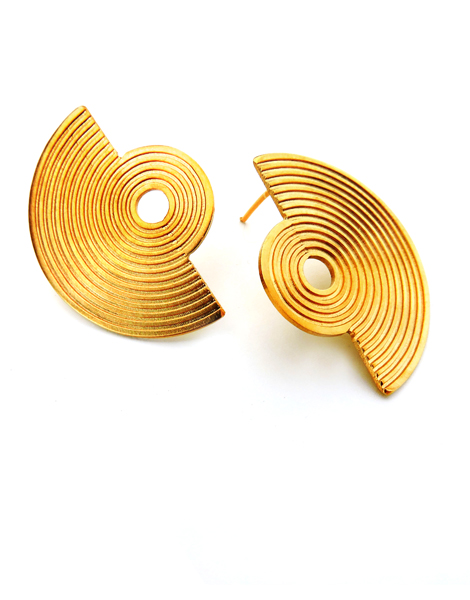

BALANCED HARMONY
FAY PAPANIKOU
“I always start with the geometry and structure of the objects to reach the final design,” says 28-year-old designer Fay Papanikou, who approaches jewelry design by including a strong element of architecture, which is what she studied. “The notion of harmony and of the correct proportions in art and construction are deeply rooted concepts, and achieving this balance is a constant challenge in any era.”
Papanikou’s new collection is inspired by mythology. “Lyra” – the gift of Hermes to Apollo – forms part of the “Strings” collection. “The structural elements were references to my design experiments,” she explains. “Beyond the ephemeral dictates of fashion, the timeless forms of that mythical era are still a bridge between people of different cultures.”

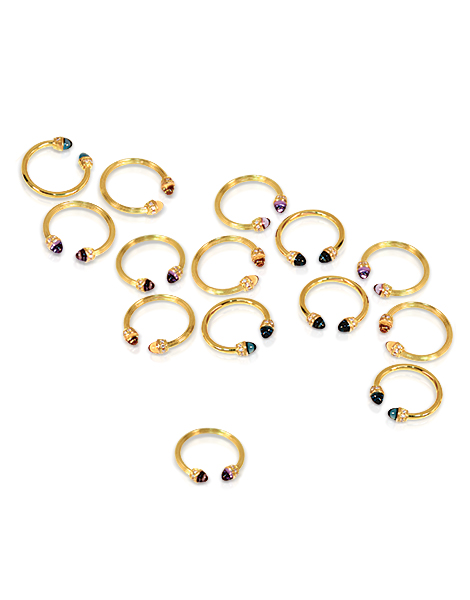
REVIVING ANCIENT JEWELRY
MARIA LALAOUNIS
The Lalaounis name needs no introduction. It is a firm with international scope which has revived ancient jewelry techniques and designs. Today Maria Lalaounis, one of four daughters of the iconic goldsmith Ilias Lalaounis, has taken the reins. “It’s not easy to inherit such a legacy,” she says. “But my father passed on his endless love for his Greek heritage to me. Everything started when two tourists asked him to recreate two buckles that they had seen in the museum. The decision to revive ancient jewelry – which until then we had only seen in museums – was a great moment in the history of modern Greek jewelry.”
Having been in jewelry workshops since she was a child, Lalaounis has followed and learnt all the techniques of the craft. “When the design is complicated, I design with wax so that the technician understands what I’m visualizing,” she explains. She recently joined forces with the designer of Ancient Greek Sandals, Christina Martini; their collaboration met with great success and had an international impact. “In my opinion, the crisis revived the ancient Greek element. Greece is the focus of international concern and we have to prove that, behind the negative comments written in the newspapers, there is a Greece that develops and creates.”